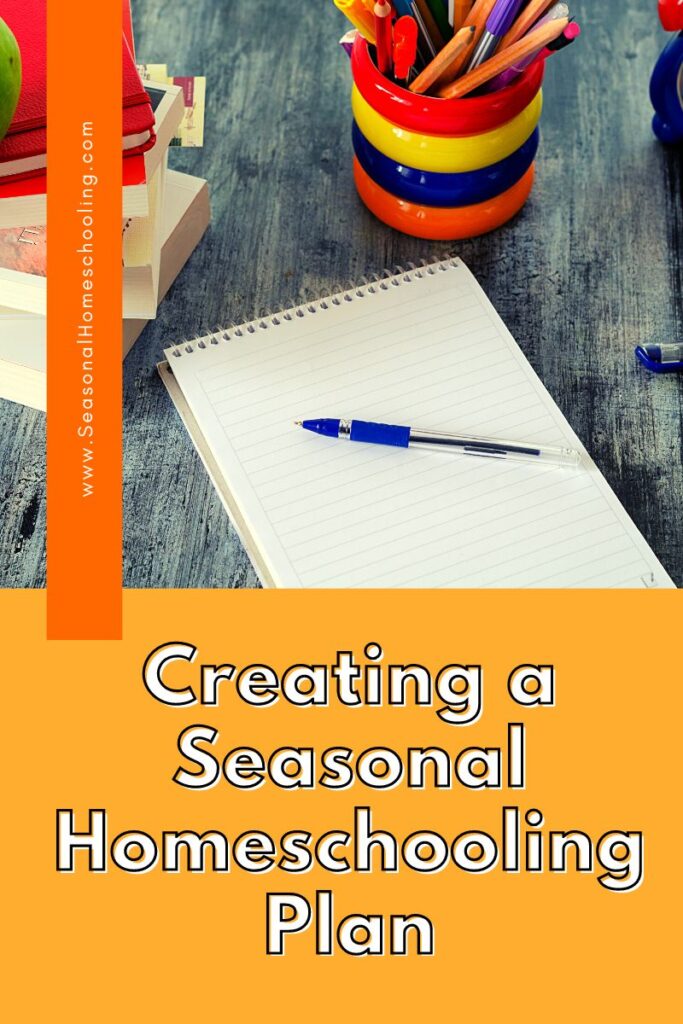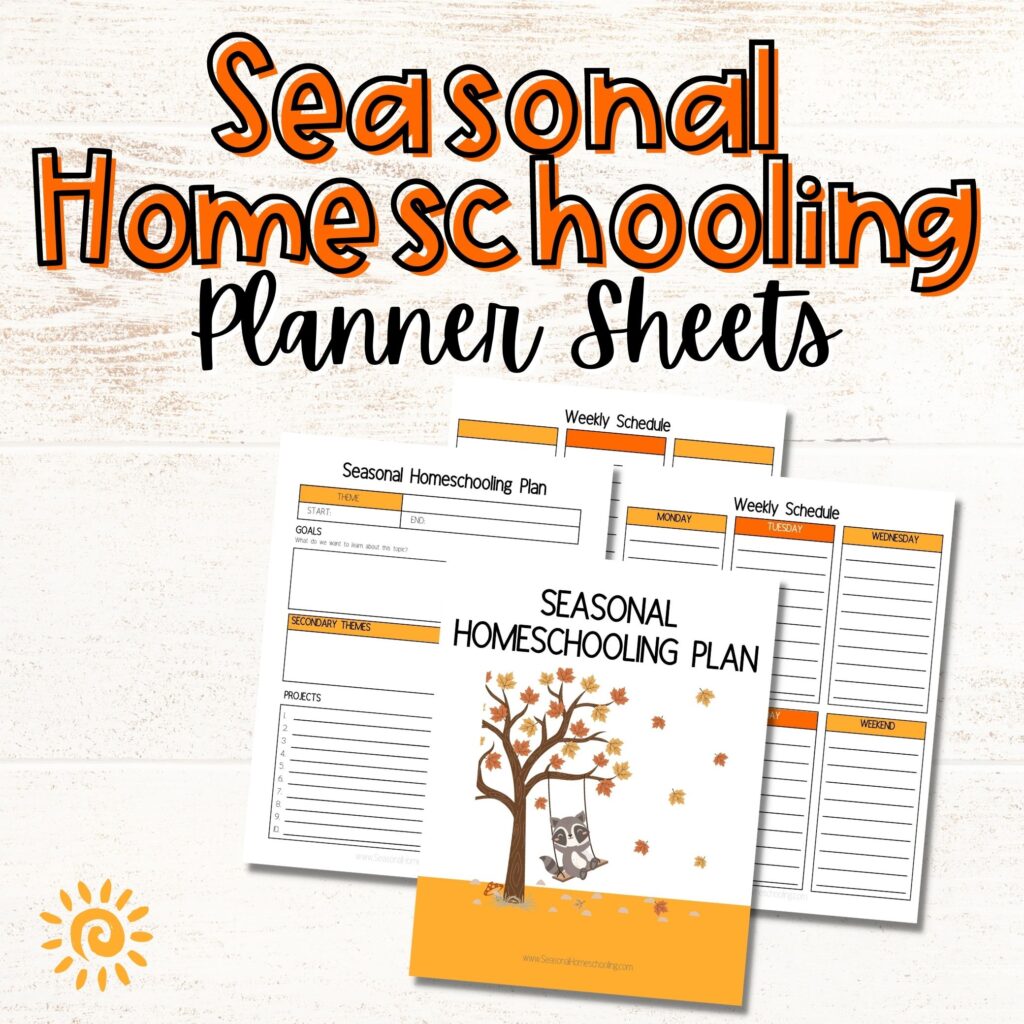Creating a Seasonal Homeschooling Plan
Creating a seasonal homeschooling plan is an excellent way to incorporate the changing seasons into your homeschooling routine. By organizing your activities and curriculum around the natural rhythms and themes of each season, you can provide variety, structure, and purpose throughout the year.

This post contains affiliate links, see my disclosure policy for more information.
Creating a Seasonal Homeschooling Plan
Here are some tips for creating a seasonal homeschooling plan:
Set Goals
Before you begin planning your seasonal homeschooling activities and curriculum, it’s important to set goals for the year. What do you want your children to accomplish academically, socially, and emotionally?
What skills or knowledge do you want them to gain? Once you have a clear understanding of your goals, you can begin to plan activities and curriculum that align with those goals.
Choose Themes
Each season has its own unique themes and characteristics, such as fall foliage, winter holidays, spring flowers, and summer vacations.
Choose a few themes for each season that you want to explore with your children. For example, you might choose “autumn harvest” for the fall season, “winter wonderland” for the winter season, “springtime growth” for the spring season, and “summer adventures” for the summer season.
Plan Activities
Once you have chosen your seasonal themes, plan activities that align with those themes.
For example, for the “autumn harvest” theme, you might plan a trip to a local farm, bake apple pies, or create fall-themed art projects.
For the “winter wonderland” theme, you might plan a winter nature walk, make hot cocoa, or create snow-themed art projects.

Choose Curriculum
Choose curriculum resources that align with your seasonal themes and goals. Look for books, online courses, and other resources that explore the topics and themes of each season.
For example, for the “springtime growth” theme, you might choose a science curriculum that explores plant growth and life cycles, or a literature curriculum that focuses on stories about new beginnings and growth.
Schedule Activities
Once you have planned your seasonal activities and curriculum, schedule them into your homeschooling calendar.
Create a weekly or monthly schedule that includes time for academic subjects, seasonal activities, and free time for exploration and play.
Be Flexible
Remember that your seasonal homeschooling plan should be flexible and adaptable to your family’s needs and interests. If a particular activity or curriculum resource isn’t working, be willing to adjust or try something new.
Creating a seasonal homeschooling plan can be a fun and creative process that allows you to explore the changing seasons with your children while providing structure and purpose to your homeschooling routine.
By setting goals, choosing themes, planning activities, choosing curriculum, scheduling activities, and being flexible, you can create a seasonal homeschooling plan that works for your family.






